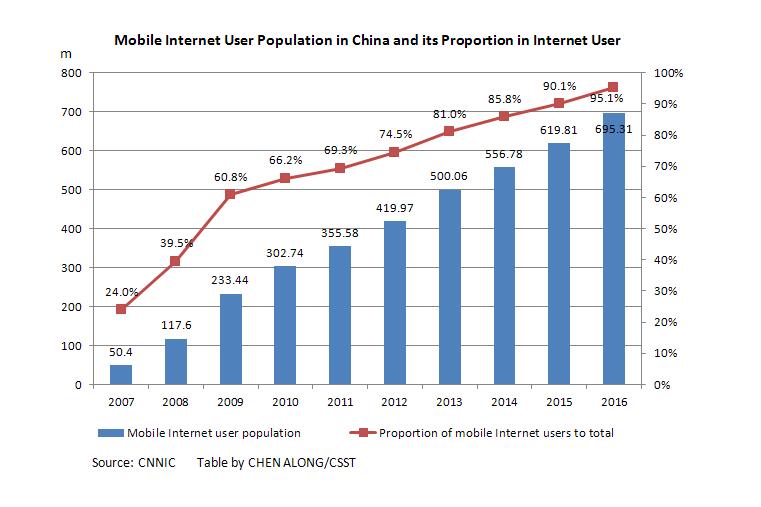China’s Internet users now number 731 million

The 39th China Statistical Report on Internet Development show that the mobile Internet user population has reached 695 million in 2016, accounting for about 95 percent of total Internet users.
The total number of Internet users in China had reached 731 million by the end of 2016, and about 95 percent of them use mobile internet.
China’s Internet penetration rate is about 53 percent, which is about 3.1 percentage points higher than the global average and 7.6 percentage points higher than the Asian average, according to the 39th China Statistical Report on Internet Development recently released by the China Internet Network Information Center.
The number of domestic Internet users grew by about 43 million in 2016, an increase of about 6 percent. The mobile Internet user population has reached 695 million, growing by more than 10 percent for the third year, according to the report. However, the report also suggests the usage of desktop and laptop computers to access the Internet both decreased.
The mobile Internet is increasingly connected with the offline economy. The report suggests that the number of mobile payment users increased by about 31 percent in 2016, reaching 469 million, and accounting for about 68 percent of mobile Internet users. Mobile payment has also rapidly spread into payment in brick-and-mortar stores, and more than half of the users use mobile payment when they are shopping in offline stores.
The report suggests that by the end of 2016, more than 20 million domain names had been registered using the domestic domain suffix “.CN,” making it the most popular country code top-level domain. It accounts for about 49 percent of China’s domain names.
The growth rate of domestic Internet users appears to have stabilized after 10 years of rapid development, according to the report. Mobile Internet has promoted a mode of consumption characterized by sharing models, intelligent equipment and pluralistic situations.
First, the government has improved the Internet environment by making policies facilitating the orderly and healthy development of the Internet. Second, per capita consumption on the Internet is steadily increasing, and the contribution of Internet consumption to the domestic GDP is growing steadily. Last of all, the development of the Internet shows increasing influence on enterprises, and enterprises are increasingly engaged with the Internet.
